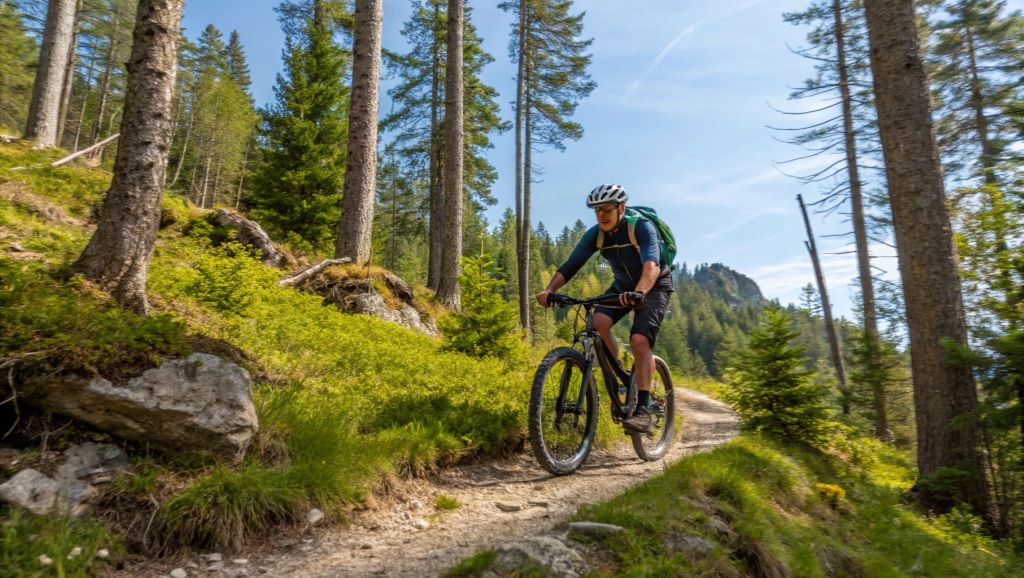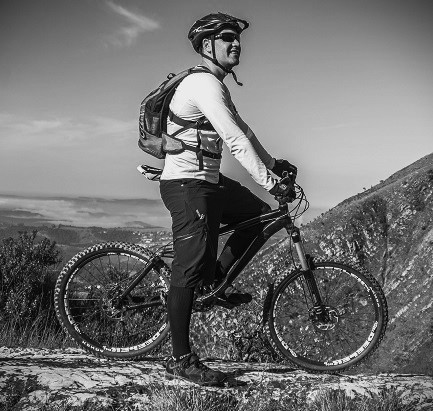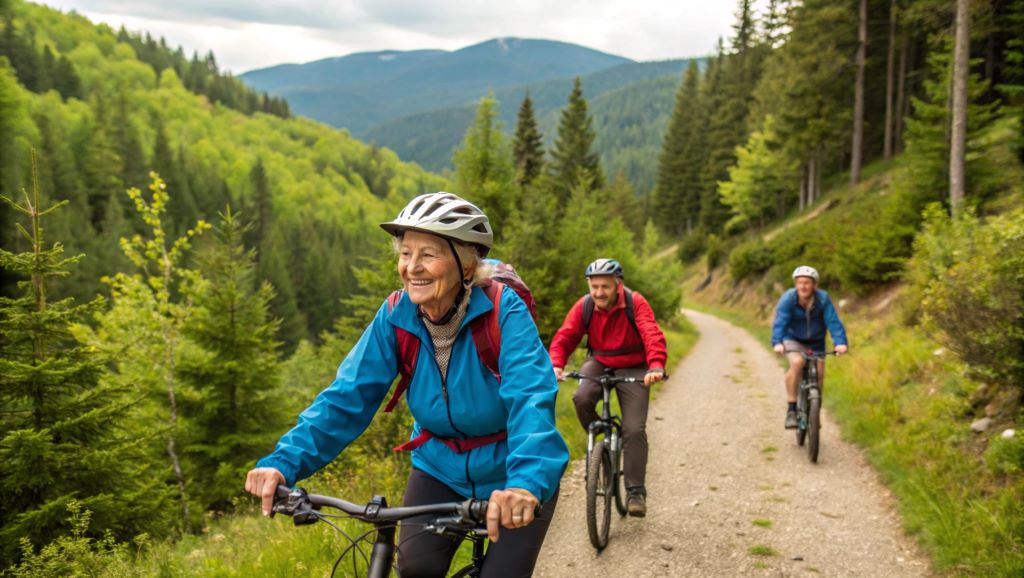The wind rushed past my ears as I pedaled down a forest trail, my heart racing with excitement. At 65, I never imagined mountain biking would become my passion. Yet, here I was, embracing the thrill of the ride. Mountain biking for seniors is more than a sport; it’s a gateway to health, joy, and adventure. Seniors across the globe are discovering its benefits, from improved fitness to mental clarity. According to a 2023 study by the Outdoor Industry Association, over 20% of mountain bikers are now over 50, proving age is no barrier. This blog post explores how seniors can safely enjoy mountain biking, offering practical tips and inspiring stories to fuel your journey.
Why Mountain Biking Appeals to Seniors
Mountain biking for seniors offers a unique blend of physical exercise and mental rejuvenation. Unlike road cycling, it immerses you in nature, navigating trails that challenge both body and mind. The sport builds strength, improves balance, and boosts cardiovascular health. A 2022 report from the American Heart Association notes that regular cycling reduces heart disease risk by up to 30% in older adults. Additionally, the thrill of conquering a trail fosters a sense of accomplishment.
For many seniors, mountain biking is a way to reconnect with their adventurous spirit. I remember my first ride; the fear of falling melted away as I focused on the path ahead. The key is starting slow, choosing beginner-friendly trails, and listening to your body. With proper preparation, seniors can enjoy this sport safely and confidently.
Choosing the Right Bike for Senior Riders
Selecting the right bike is crucial for seniors embarking on mountain biking. Comfort and control are paramount. Opt for a lightweight hardtail bike with front suspension to absorb trail bumps. Ensure the frame size fits your height, typically 15-18 inches for most seniors. Adjustable handlebars and a cushioned saddle enhance comfort during long rides.
Consider electric mountain bikes (e-bikes) for added support. They assist with pedaling, making climbs easier without sacrificing fun. According to a 2024 study by REI Co-op, e-bike usage among seniors has risen by 25% since 2020. Test rides are essential to find a bike that feels right. Your bike is your partner on this journey—choose wisely.
Essential Gear for Safe Mountain Biking
Safety gear is non-negotiable for seniors hitting the trails. A well-fitted helmet is the first priority, reducing head injury risk by 60%, per the National Safety Council. Gloves improve grip, while padded shorts cushion falls. Knee and elbow pads offer extra protection on rugged terrain.
Invest in quality cycling shoes with good traction for better pedal control. A hydration pack keeps you fueled and hydrated on longer rides. I learned this the hard way after a dehydrating ride left me dizzy. Sunglasses or clear goggles protect your eyes from dust and branches.
Finding Senior-Friendly Trails
Not all trails suit senior riders, but many are designed for beginners. Look for smooth, wide paths with gentle slopes, often marked as green or easy on trail maps. Local bike shops or apps like Trailforks can guide you to nearby options. Community parks often have accessible trails perfect for starting out.
Avoid technical trails with steep drops or rocky sections until you’re confident. My first trail was a local park loop—flat, scenic, and forgiving. Gradually, I tackled tougher paths as my skills grew. Check trail conditions beforehand, as weather can affect safety. Joining a local biking group can also introduce you to senior-friendly routes and supportive riders.
Building Fitness for Mountain Biking
Mountain biking demands stamina, strength, and balance, but seniors can build these gradually. Start with short rides, 20-30 minutes, two to three times weekly. Incorporate strength training, like squats or lunges, to boost leg power. Yoga or stretching improves flexibility, reducing injury risk.
A 2023 study by the Journal of Aging and Physical Activity found that regular cycling enhances muscle strength in seniors by 15%. I began with daily walks and light pedaling on flat paths, slowly increasing intensity. Listen to your body—rest when needed. Hydration and nutrition are vital; carry water and snacks on rides. Consistent practice transforms mountain biking into a sustainable, joyful habit.
Overcoming Common Challenges

Seniors may face challenges like joint pain or fear of falling when starting mountain biking. Proper bike fit and low-impact trails can minimize discomfort. Consult a doctor if you have chronic conditions. Physical therapy exercises, like knee stretches, helped me manage arthritis during rides.
Fear is another hurdle. I hesitated before my first downhill, but practicing on gentle slopes built my confidence. Take lessons or join a beginner’s clinic to learn techniques like braking and turning. Patience is key—progress at your pace. With time, challenges become stepping stones to mastering the trails.
Mental and Social Benefits of Mountain Biking
Mountain biking for seniors isn’t just physical—it’s a mental boost. Navigating trails sharpens focus and reduces stress. The National Institute on Aging reports that outdoor exercise lowers anxiety in seniors by 20%. Riding through nature feels meditative, lifting your mood.
Socially, biking connects you with others. Joining a club or group ride fosters camaraderie. I met lifelong friends on group rides, sharing laughs and tips. Local meetups or online forums like MTB Project connect you with fellow riders. These bonds make every ride more than exercise—it’s a shared adventure.
Tips for Safe and Enjoyable Rides
Safety ensures mountain biking remains fun. Always check your bike before riding—tires, brakes, and chain. Ride with a buddy or share your route with someone. Carry a phone and first-aid kit for emergencies. I once got a flat tire mid-trail; a repair kit saved the day.
Start with short, familiar trails and avoid riding at dusk when visibility drops. Use lights or reflective gear if riding early or late. Pace yourself—rest when tired. Follow trail etiquette, yielding to faster riders. These habits keep mountain biking for seniors safe and rewarding.
My Journey as a Senior Mountain Biker
At 62, I was skeptical about mountain biking. A friend convinced me to try a beginner trail, and I was hooked. The first ride was tough—my legs burned, and I wobbled often. But the joy of gliding through pines was unmatched. Each ride built my confidence and strength.
Now, I ride weekly, tackling trails I once thought impossible. The community I found—other seniors sharing stories—made it special. Mountain biking taught me that age doesn’t define adventure. It’s about taking that first pedal and embracing the journey, one trail at a time.
Read More: Carrera Mountain Bike: A Comprehensive Guide
Conclusion
Mountain biking for seniors opens doors to fitness, joy, and connection. It’s never too late to start—whether you’re 60 or 80, the trails await. With the right bike, gear, and trails, seniors can ride safely and confidently. The physical and mental benefits, backed by studies like those from the American Heart Association, make it a worthwhile pursuit. My journey proves it’s possible to find adventure at any age. So, grab a bike, hit a trail, and feel the rush. Share your thoughts or experiences in the comments below, or pass this article to a friend ready for their own biking adventure!
FAQs
Why is mountain biking good for seniors?
It improves fitness, balance, and mental health while offering adventure. Regular rides boost heart health and reduce stress.
What type of bike is best for senior riders?
A lightweight hardtail or e-bike with front suspension and a comfortable saddle suits seniors best.
Are there safe trails for senior mountain bikers?
Yes, beginner-friendly trails with smooth paths and gentle slopes are ideal. Check apps like Trailforks.
How can seniors stay safe while mountain biking?
Wear helmets, use proper gear, start slow, and ride with a buddy. Always check your bike.
Can seniors with joint pain try mountain biking?
Yes, with a doctor’s approval, proper bike fit, and low-impact trails, seniors can manage joint pain.
Read More:
Scott Mountain Bikes: Maintenance Tips for Peak Performance
Mountain Bikes for Women: Discover the Perfect Ride for Adventurous Ladies!

Welcome to outdoorxsports.com! I’m Russell, your guide to the awesome world of mountain biking. This blog is all about building a community of riders who love to share their passion for the sport. Expect inspiring stories, local trail recommendations, fun challenges, and tips for making the most of your time on two wheels.

